New technologies are enabling innovation in construction all the time. For conservation work, new surveying technologies give us new insights into our historic buildings. A recent collaboration with the City Council’s Surveying and Mapping Division to carry out a detailed drone survey of the roofscape and the interior of the rotunda of City Hall has given us some beautiful new views of this significant building. A short sample clip from the video footage can be seen below.
Dublin City Hall internal drone footage. from City Architects on Vimeo.
The purpose of this survey was to capture the detail and assess the condition of stonework, plasterwork, paintings and roof details at high level. City Architects has been providing architectural advice for City Hall going back to 1852, when the Dublin Corporation architect Hugh Byrne carried out alterations when the Corporation first acquired the building. Today City Architects, as a RIAI Accredited Grade 1 Conservation Practice, works to ensure that all regular maintenance or planned interventions are carried out in line with best conservation practice.
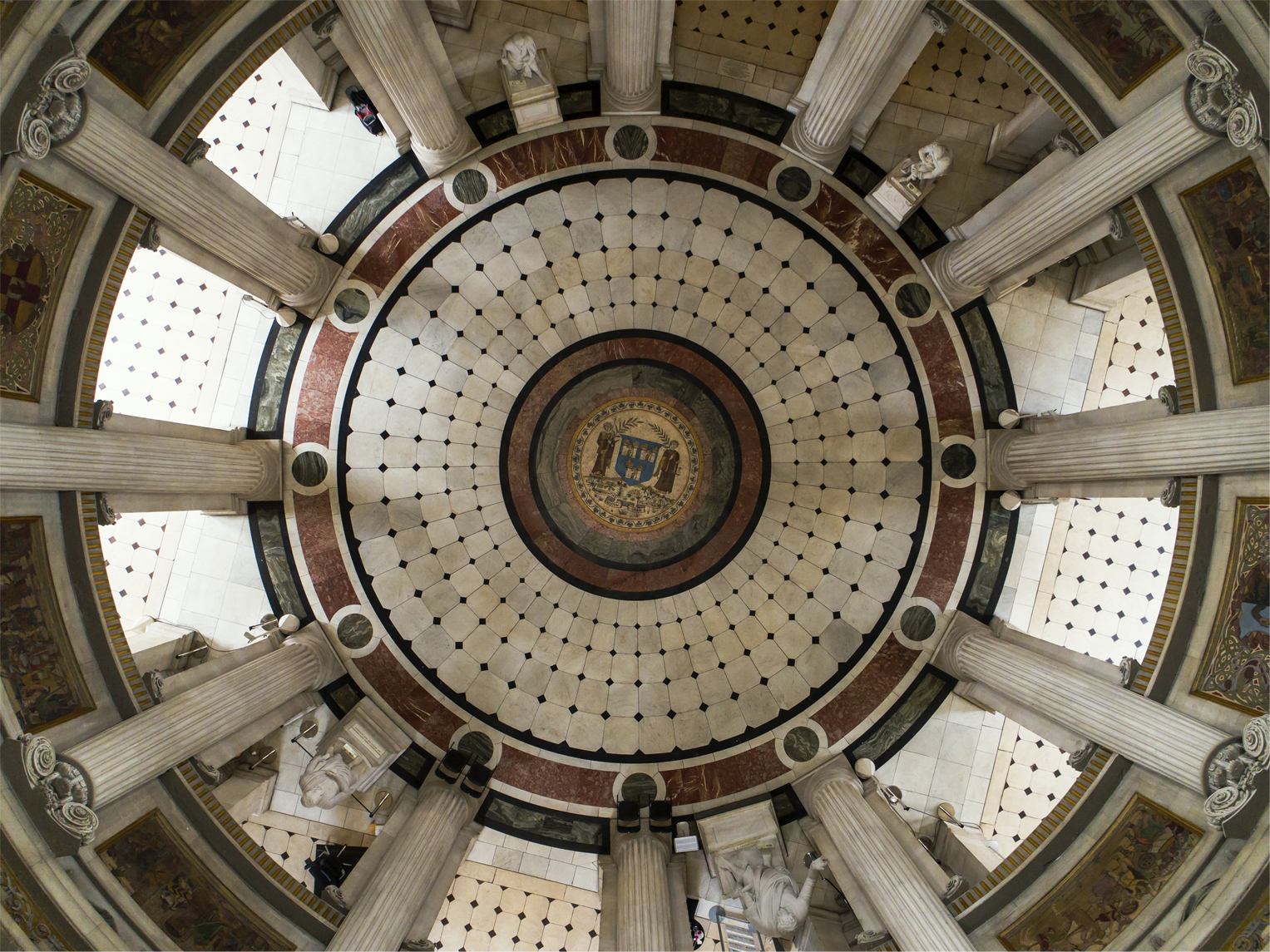
Interior view looking down from inside the cupola
The drone survey allows close, detailed inspection of the building without the need for scaffolding or mobile elevated work platforms. Without the use of drone equipment, a mobile scaffold would have to be erected inside the rotunda and moved from bay to bay, which is a very time consuming process. The use of a drone also has a health and safety benefit by eliminating the need for surveyors to work at height. For the roof, which features fragile materials and significant working at height risks, the drone survey was able to capture a level of detail and comprehensive oversight of the building and its surroundings that would not have been possible by someone on the roof.
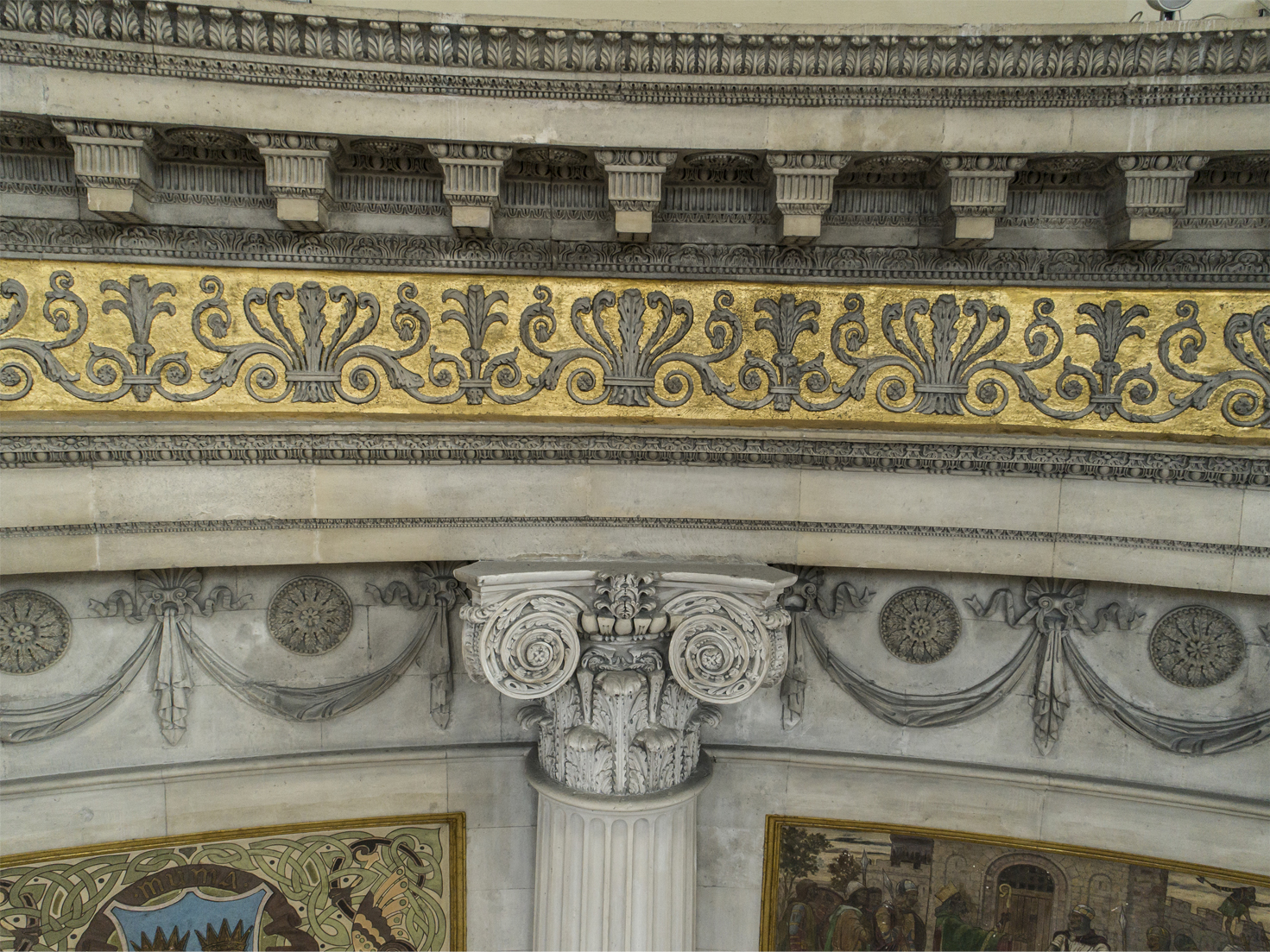
Interior entablature detail
Another advantage is scheduling: any surveying and maintenance works carried out by City Architects must work around City Hall’s busy events schedule to avoid disruption to the building’s public use. Using a drone meant that there was little or no impact on the operations of the rotunda space.
The detailed images and video footage obtained from this survey are hugely beneficial in recording and assessing the condition of decorative historic features, paintings and plasterwork, the important external detailing that protects the building from deterioration over time and the installations that allow safe access for maintenance. The valuable footage helps to inform the maintenance regime and any necessary fabric repair for this significant civic building.
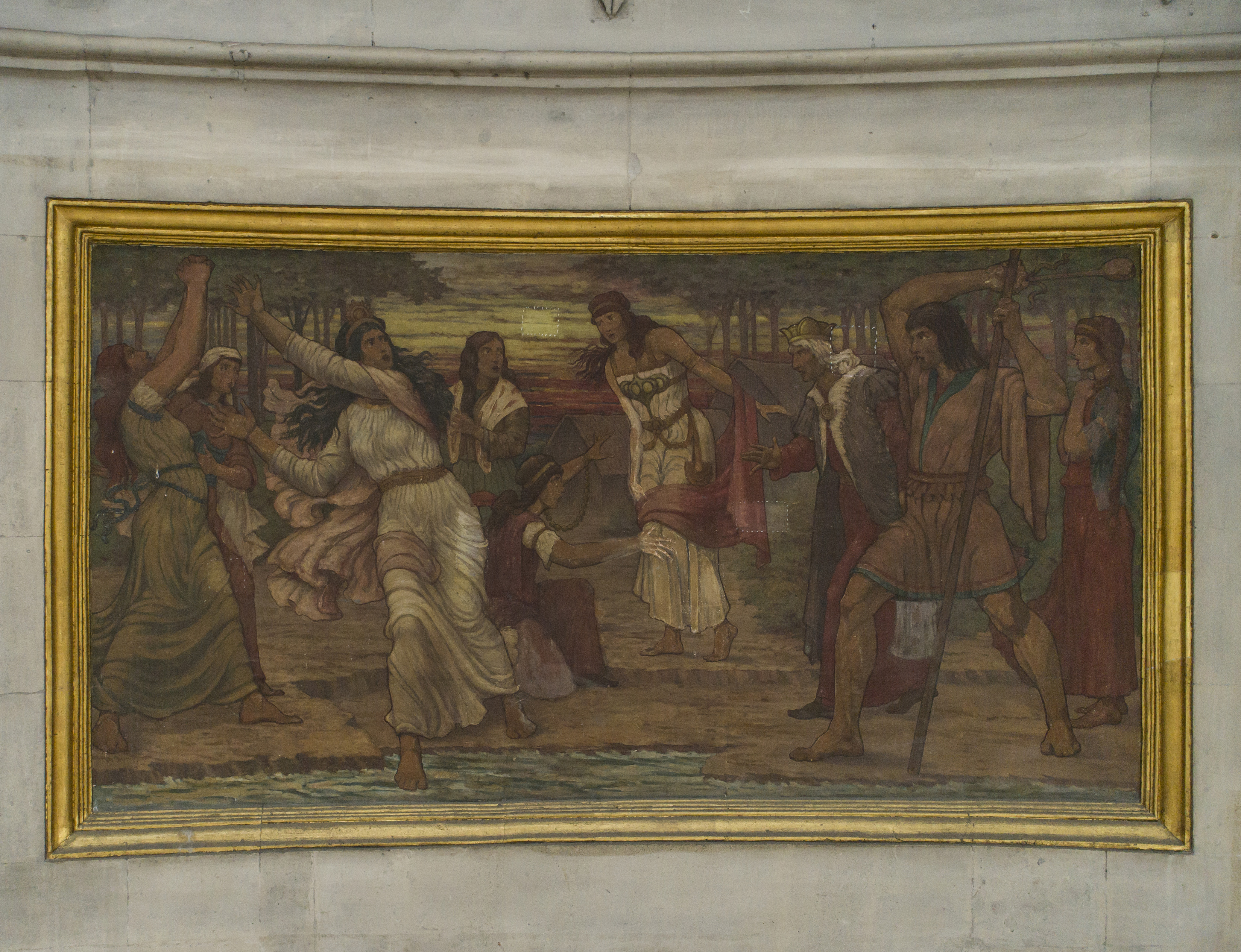
Painting detail
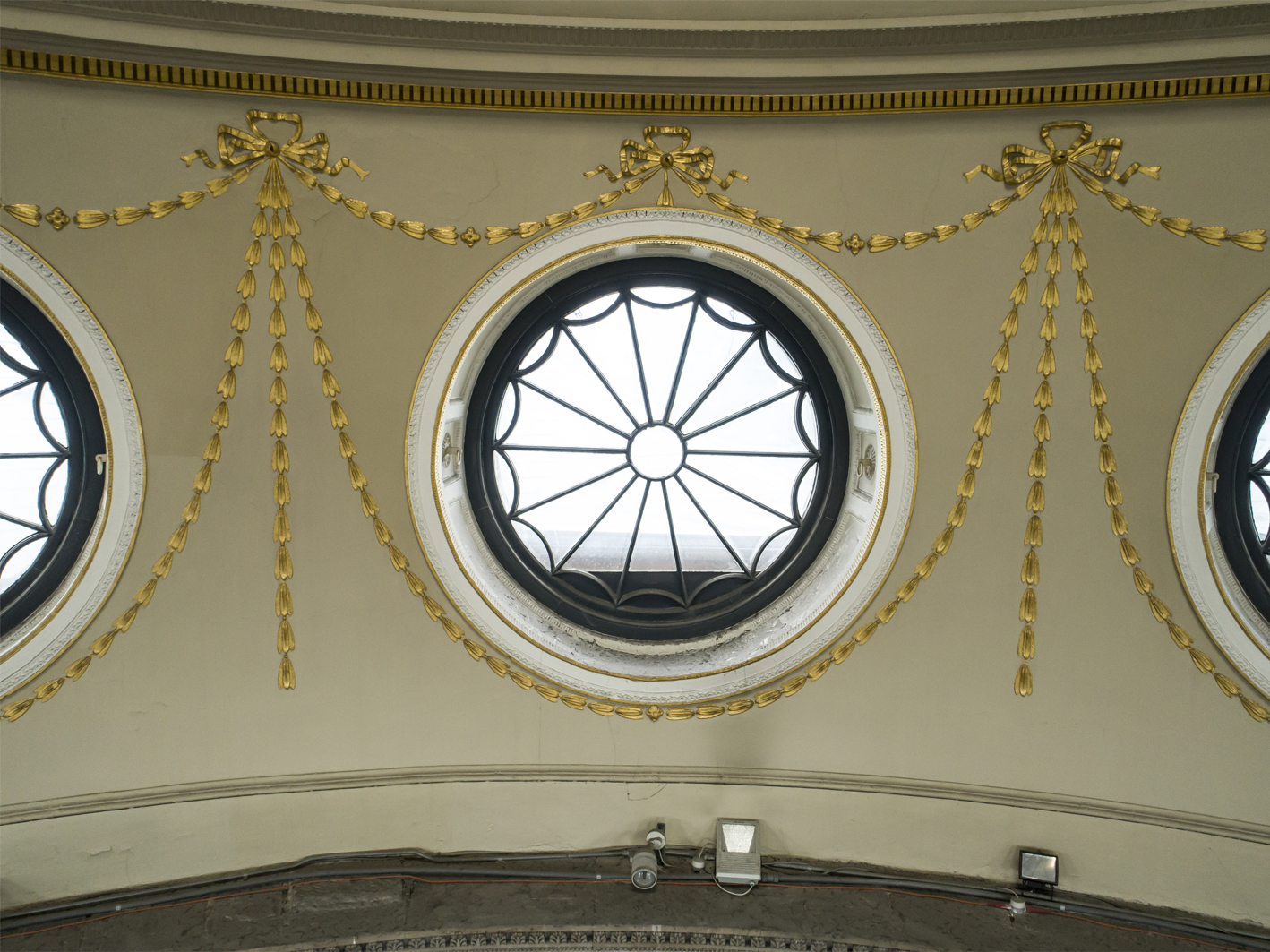
Oculus detail, also showing lighting and cable runs
One of the first uses of the footage has been the upgrading of the lighting within the rotunda. DCC’s electricians were able to identify all the fittings, cable runs and routes required for upgrading the lighting expediently and accurate specifications could be issued without having to physically get up into the space. This also allows for cost certainty when carrying out the works. As a mobile scaffold was required for the installation, the works were carried out in a week in early January when there was a window with no scheduled public events. The opportunity was taken to also clean the high level surfaces at the same time.
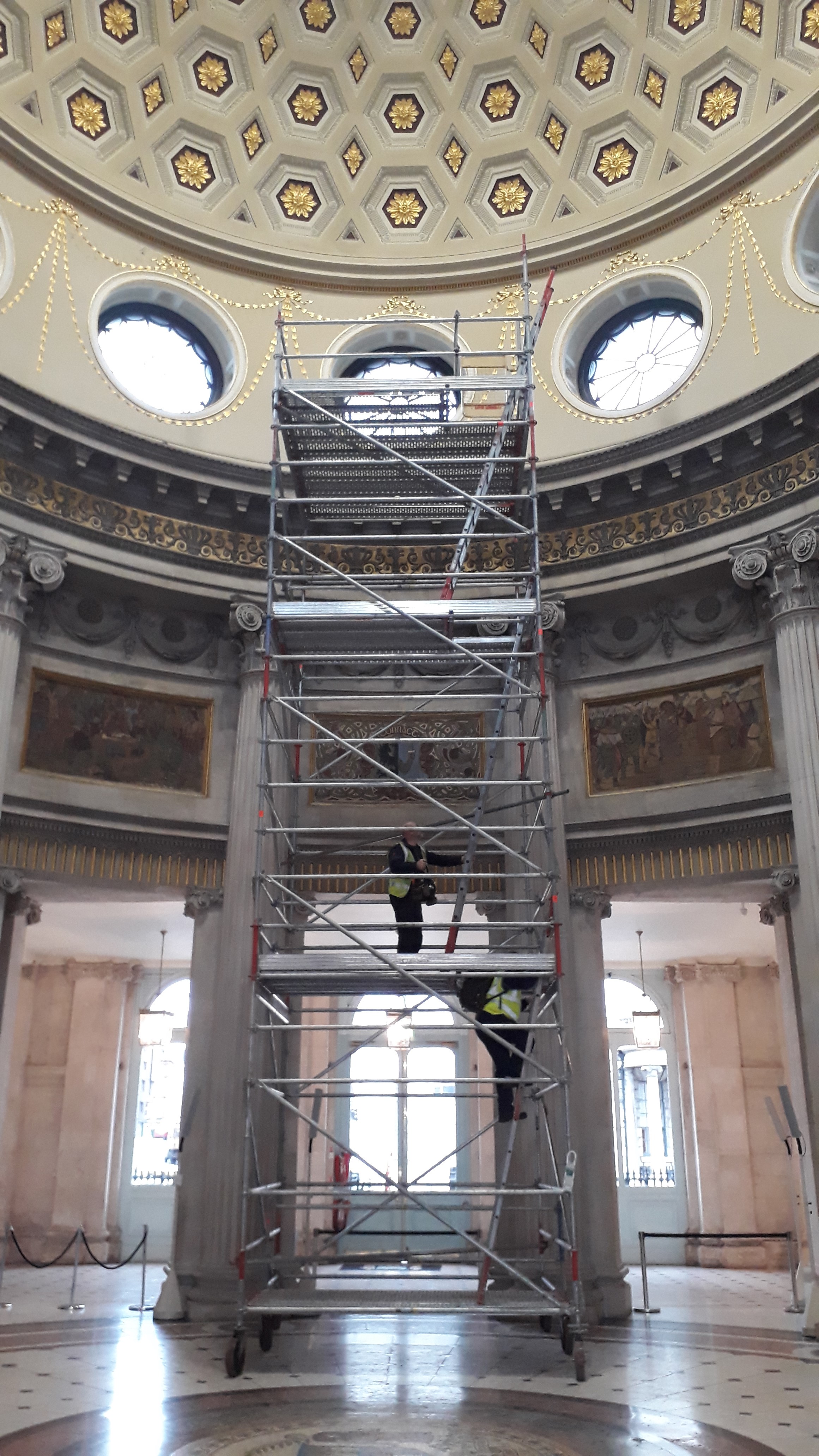
Mobile scaffold for working at single bay inside rotunda
Although there is less time restriction in carrying out external works, the drone survey allowed for an accurate survey and Safety Audit of the roofscape. The elevated position of the drone imagery eliminates perspectival distortion so the image can be precisely scaled. The images can then be used to accurately measure quantities of materials and fabric that need to be repaired or replaced. This will allow for the accurate costing of the replacement of the degraded snow boards and the instatement of a defined walkway for safe maintenance access.
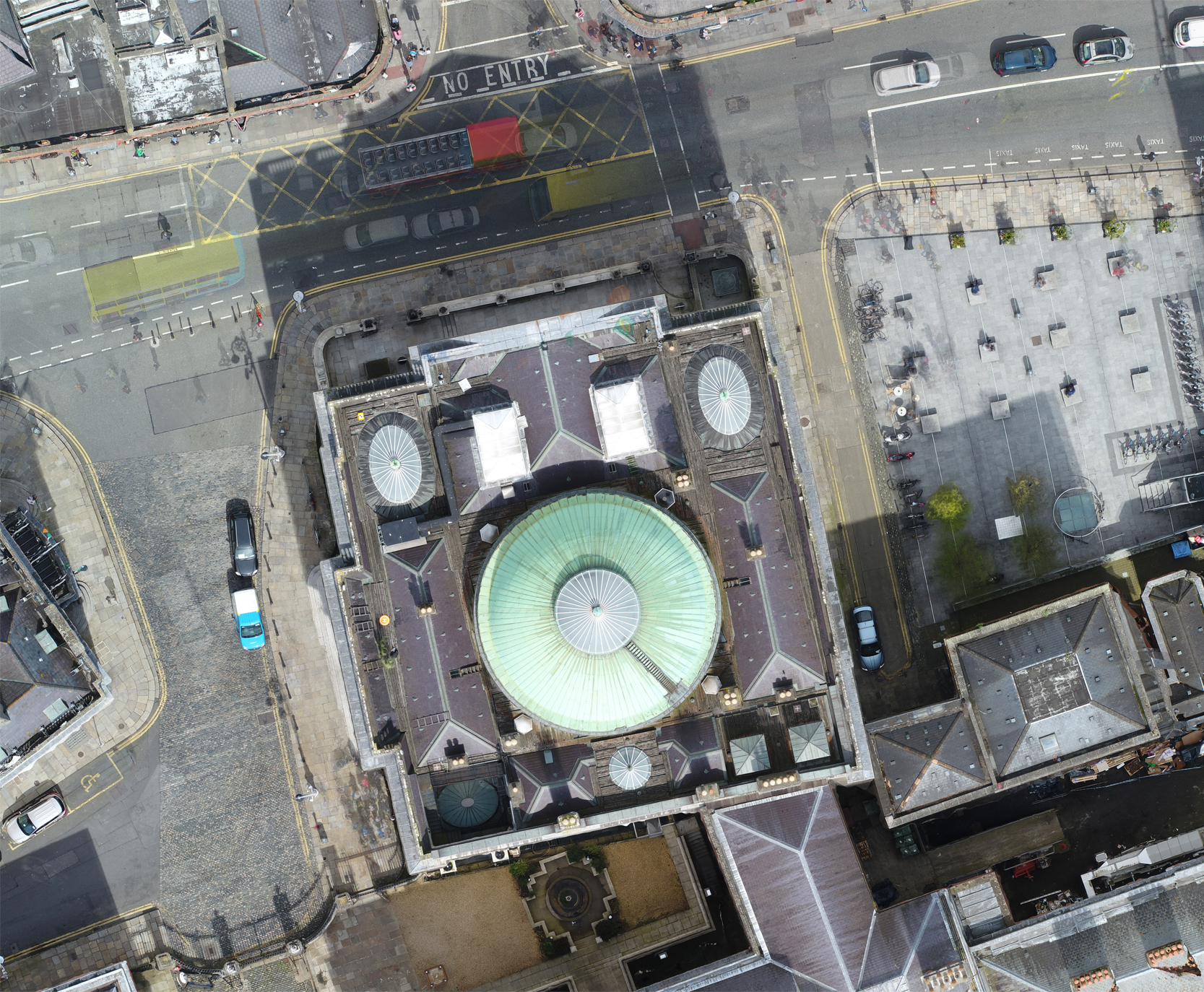
Aerial view
City Hall, at the top of Parliament Street, is a gem of neo-classical architecture and holds a significant place in the history of the City. Originally the Royal Exchange, City Hall was built between 1769 and 1779 to the designs of architect Thomas Cooley as a place for merchants and guildsmen to meet, discuss trading affairs and exchange currencies. The exchange came into the ownership of Dublin Corporation in 1851 despite the opposition of the merchants, and became their headquarters in 1852 for which it was subdivided into offices.
Following an award-winning restoration by City Architects & Paul Arnold in 2000, the building was restored to its original form and is now a busy civic space, popular tourist destination and workplace of many. The vaulted lower ground floor space is home to a permanent exhibition tracing the civic history of Dublin, a variety of public events take place in the rotunda and the elected council representatives make use of the Council Chamber and private rooms on the upper floors.
In accordance with conservation best practice, a Decennial Report was carried out by Paul Arnold Architects ten years after the restoration of City Hall. This report, completed in 2011, established a list of ongoing maintenance and repairs required for the building’s upkeep. DCC’s maintenance team and specialist contractors in consultation with City Architects, deals with the items on this list on an ongoing basis.
The current phase of scheduled works being carried out is the repair and maintenance to all the timber joinery elements of the rotunda space, both interior and exterior. The three large timber windows facing onto Cork Hill suffered damage during the snows of 2018 and are being carefully repaired and restored.
From time to time, emergency works are also required that need to be dealt with immediately. Currently emergency repairs are being carried out on the Portland stonework balustrades to the front of the building. Some of these have been severely degraded by atmospheric pollution and the effects of time. Cracked and broken pieces of stone could present a risk to the public as well as further deterioration of the element and so these repair works were required immediately.
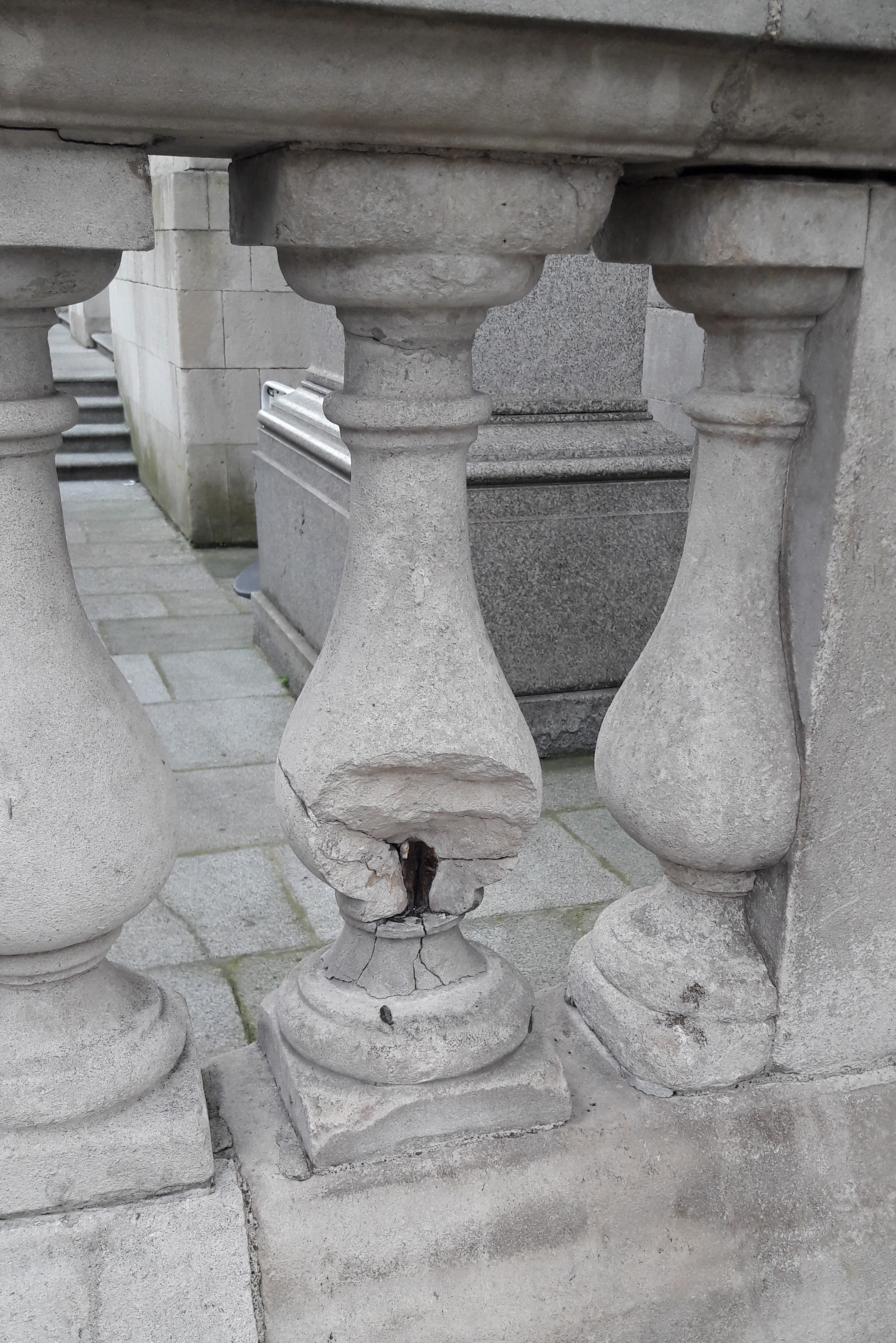
Damaged stonework being repaired
Highly skilled stonemasons from experienced heritage contractor P Mac Ltd. are carrying out this work repairing the damaged stonework. The masons are also carrying out scheduled repairs to areas of the stone floor within the rotunda space. One of these stonemasons also recently carried out repair works to the marble statue of Daniel O’Connell that can be seen inside City Hall. The Liberator’s thumb, previously repaired at some earlier stage, had been damaged, so the stonemason carried out a minor repair to this artwork in keeping with conservation best practice.
For further details about City Hall, one of our most important civic buildings, follow this link to the DCC website: http://www.dublincity.ie/dublincityhall
